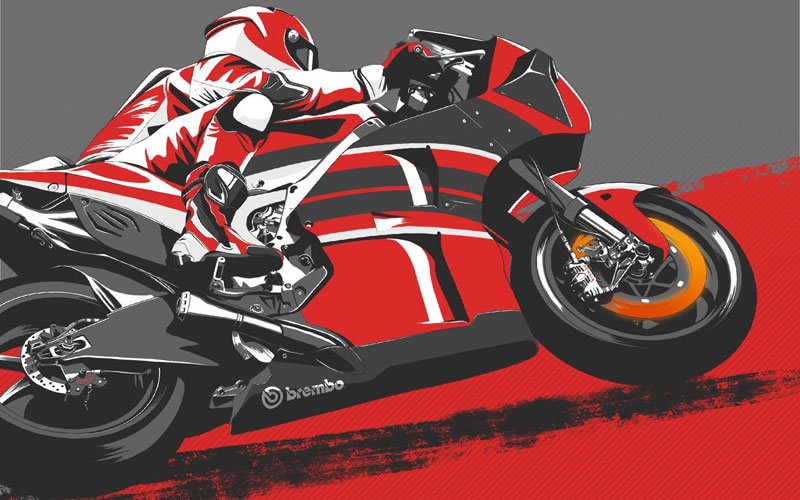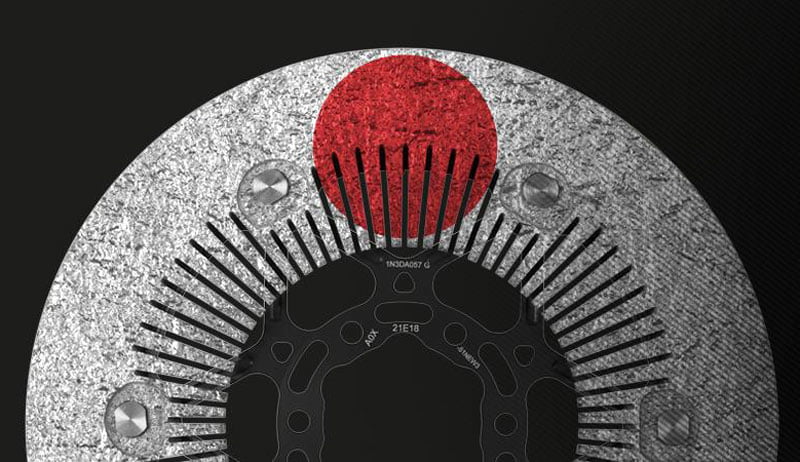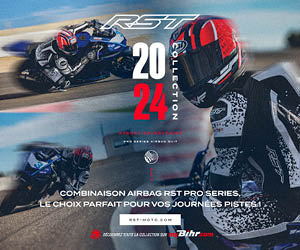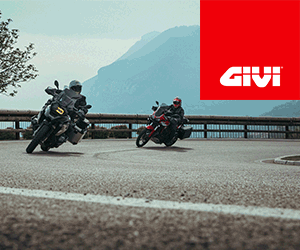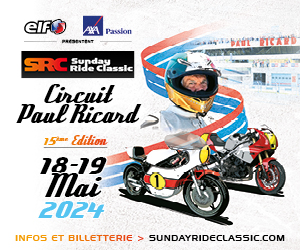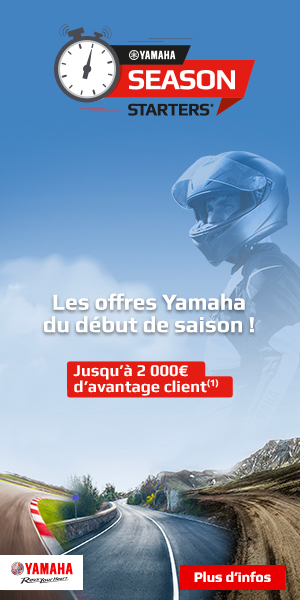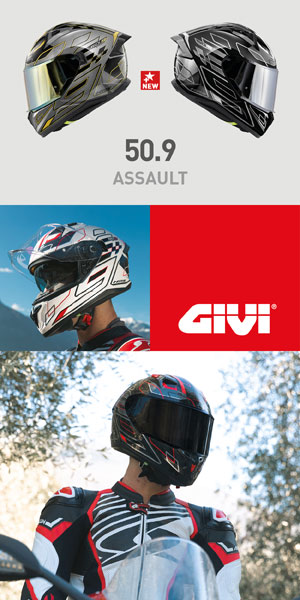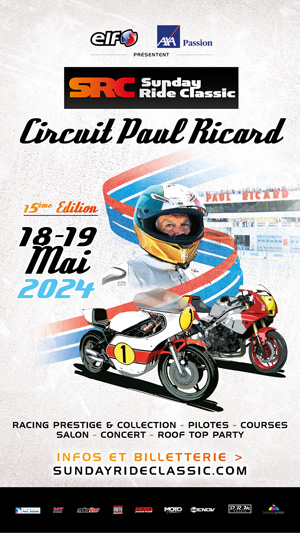A HUGE BREMBO BRAKE SYSTEM FOR THE MOTOGP CHAMPIONSHIP IN JAPAN, WITH ALL DISCS ALSO AVAILABLE FOR YOUR OWN MOTORCYCLE
With the arrival of autumn, MotoGP moves to the Far East where four GPs will take place this year, including that of Australia. According to the Brembo technicians who work closely with the 24 drivers in the premium category, the Twin Ring Motegi is a very demanding circuit for the brakes. On a scale of 1 to 6, it is rated 6 on the difficulty index.
MotoGP uses the road circuit which has only a few fast turns and many slow turns, interspersed with straight sections of medium length: seven of the turns are taken by the motorcycles at less than 100 km/h. It is the number of turns taken in 2nd gear that makes it one of the most demanding on the brakes due to the difficulty in cooling the discs between one braking episode and another.
Brembo's massive disc for MotoGP
To tackle the most demanding circuits for the braking system, Brembo introduced 2022 mm diameter ventilated carbon fiber discs in MotoGP in 355, in addition to 340 mm discs. These discs were used during tests in Sepang, Jerez and Barcelona and on the Spielberg track and gave great satisfaction to the drivers.
The regulations also provide that, for safety reasons, drivers will have to choose between 355mm or 340mm discs on the Motegi, Spielberg and Buriram circuits, 320mm discs are not permitted, although they can be used in all other GPs. These restrictions obviously do not apply when a race is declared wet, because the braking intensity is reduced.
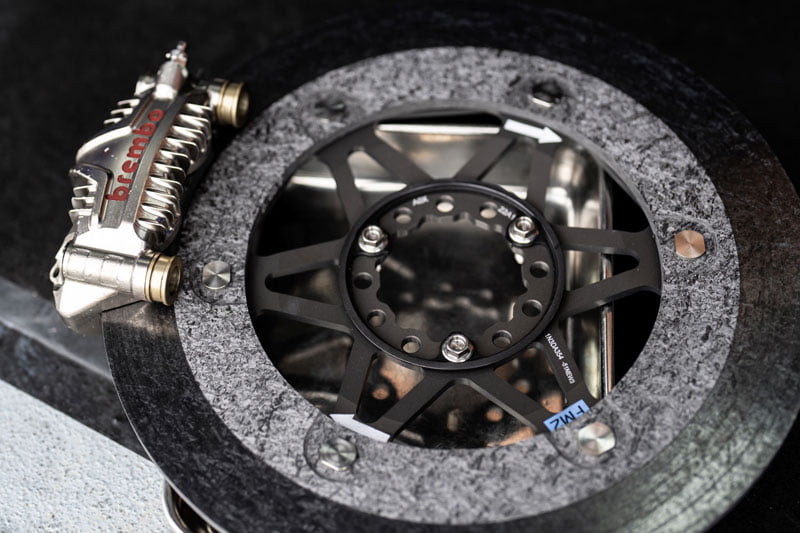
Brembo record discs for road motorcycles
Although 355mm diameter discs set a record in MotoGP history, the maximum limit for production motorcycles is much lower. The largest Brembo floating disc in terms of diameter is the 330mm used on the Ducati Panigale.
Learn more about the Brembo range of brake discs for motorcycles.
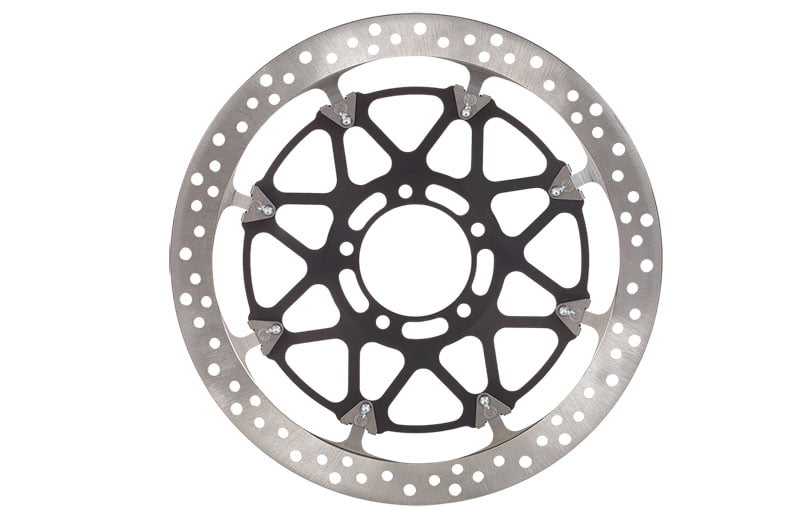
The ultimate test
Brakes are required in no less than 10 of the 14 corners of the Motegi Twin Ring, and in 5 of them they are used for more than 4 seconds. In the first corner, braking lasts 5 seconds, the time needed to reduce the speed to 228 km/h. Due to this and subsequent braking episodes, MotoGP riders use their brakes for 34 seconds per lap, a third of the Japanese GP.
There is also considerable braking in turn 5 where the load on the brake lever is 5,6 kg while the Brembo HTC 64T brake fluid reaches a pressure of 12 bar. Adding up all the forces applied by a driver to the Brembo brake lever from the start line to the checkered flag, the result comes to almost 950 kg.
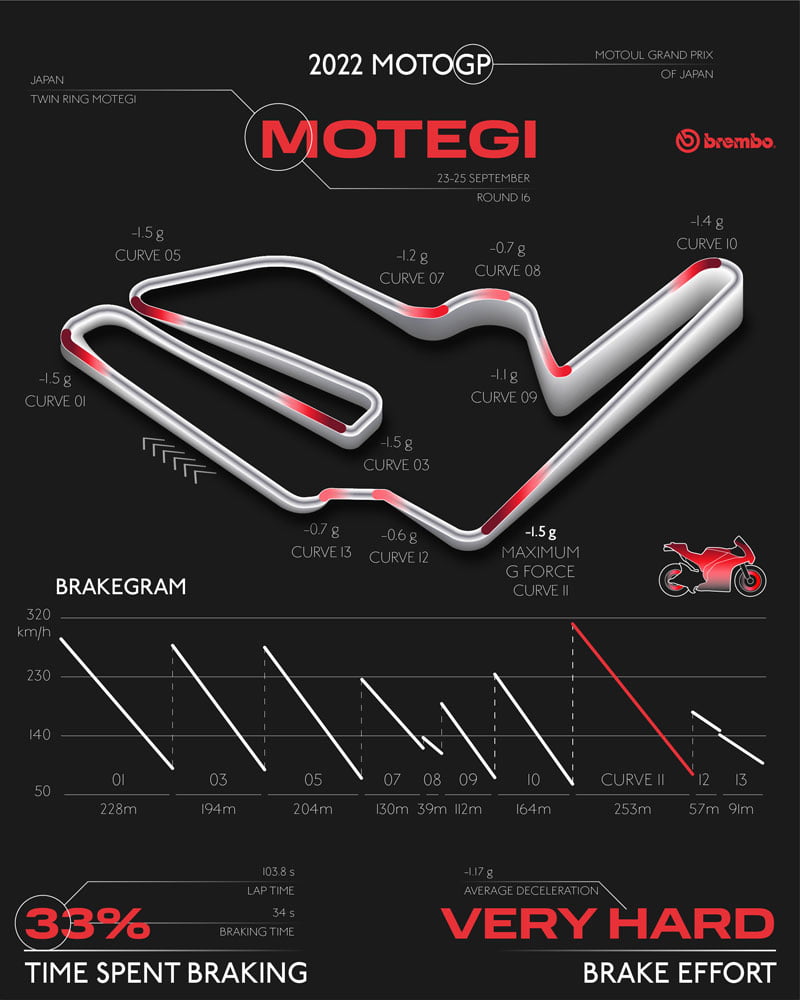
Five sections of hard braking
On the 10 braking sections of the circuit, 5 are considered very difficult on the brakes, while 2 are of medium difficulty and 3 are light.
Turn 11, at 90 degrees, is the one that puts the greatest strain on the braking system : the MotoGP riders approach it at 311 km/h and brake for the 5,3 seconds necessary to reduce their speed to 81 km/h. During this time, the riders exert 6,2 kg of pressure on the brake lever while the motorcycles cover a distance of 230 meters and the brake fluid pressure reaches 13,3 bars.
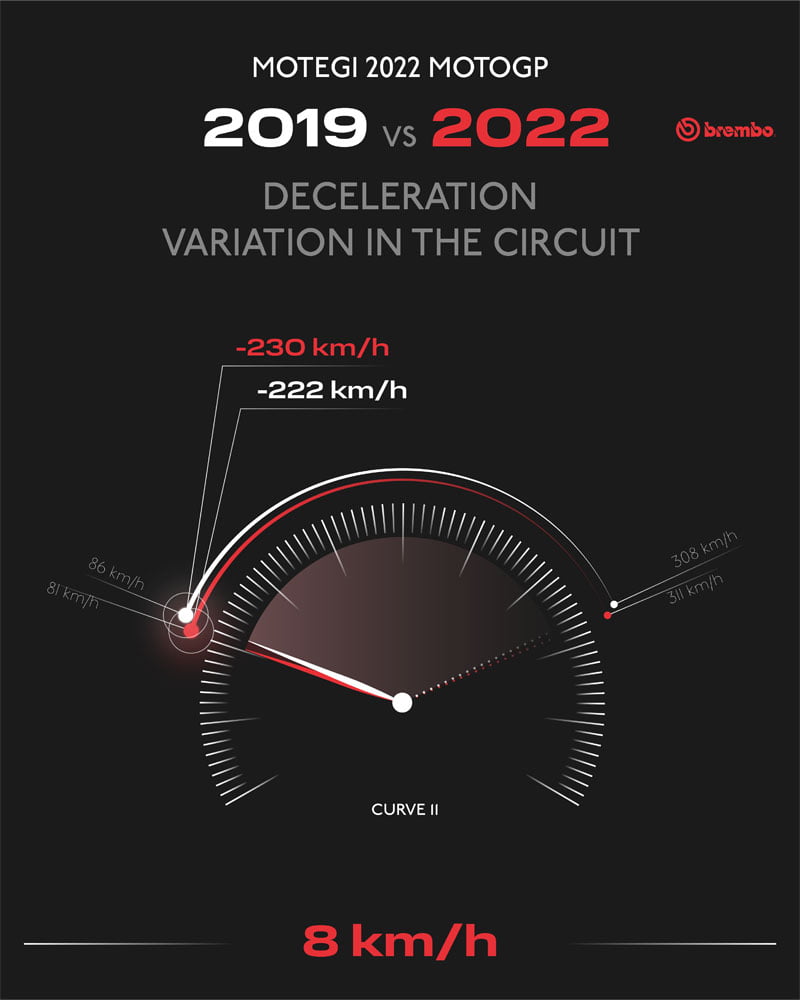
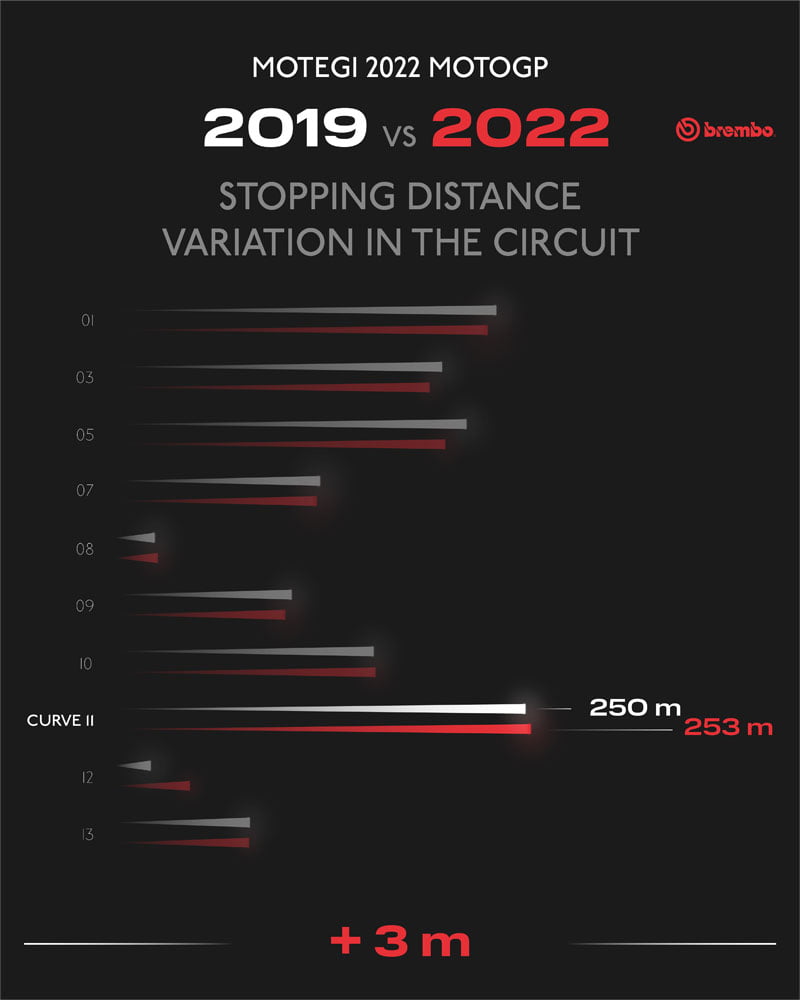
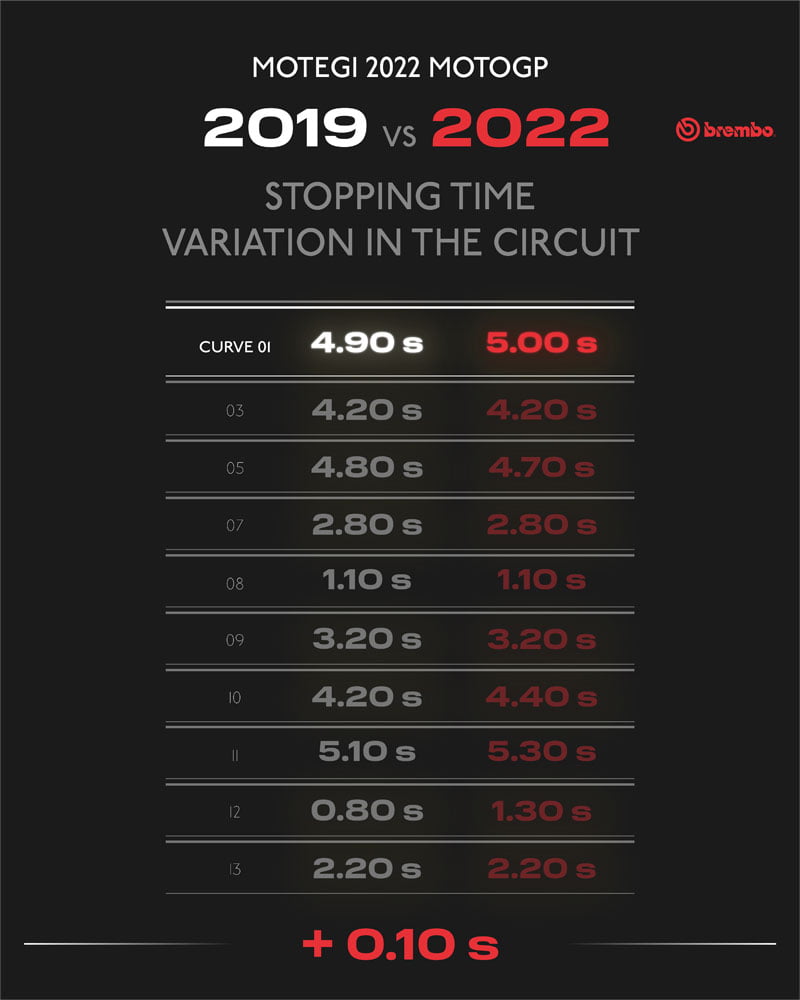
And what about video games?
Tackling turn 11 of the Japanese GP in the MotoGP video game is not so easy, as nothing around the tarmac track presents any special features. You should start braking just before reaching the blue and white border on the left, once you have passed the house with the wooden roof on the side of the track. Shift down into 2nd gear and once you pass the last billboard for a well-known energy drink, lean into the bend. When you shift into first gear, you can move to the right curb and immediately open the throttle.
